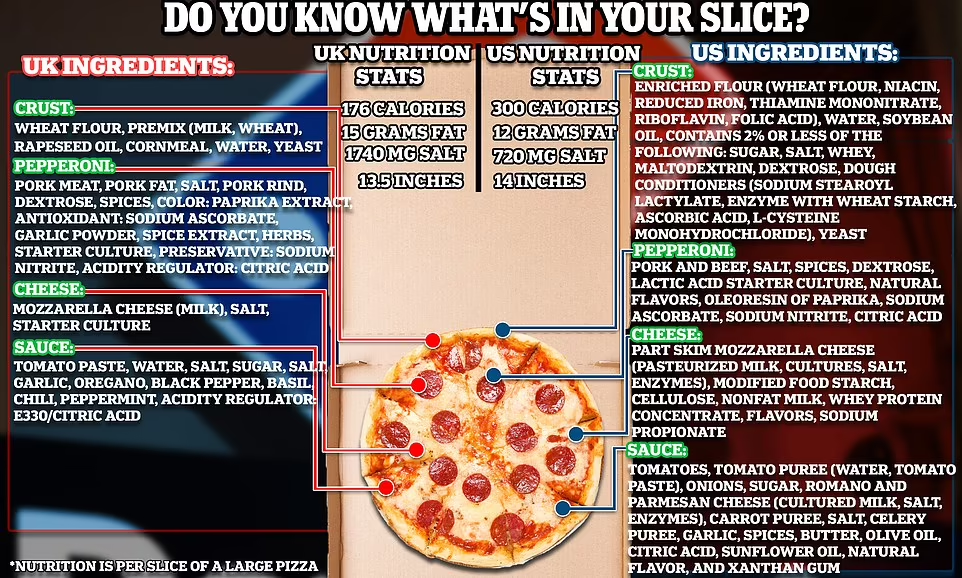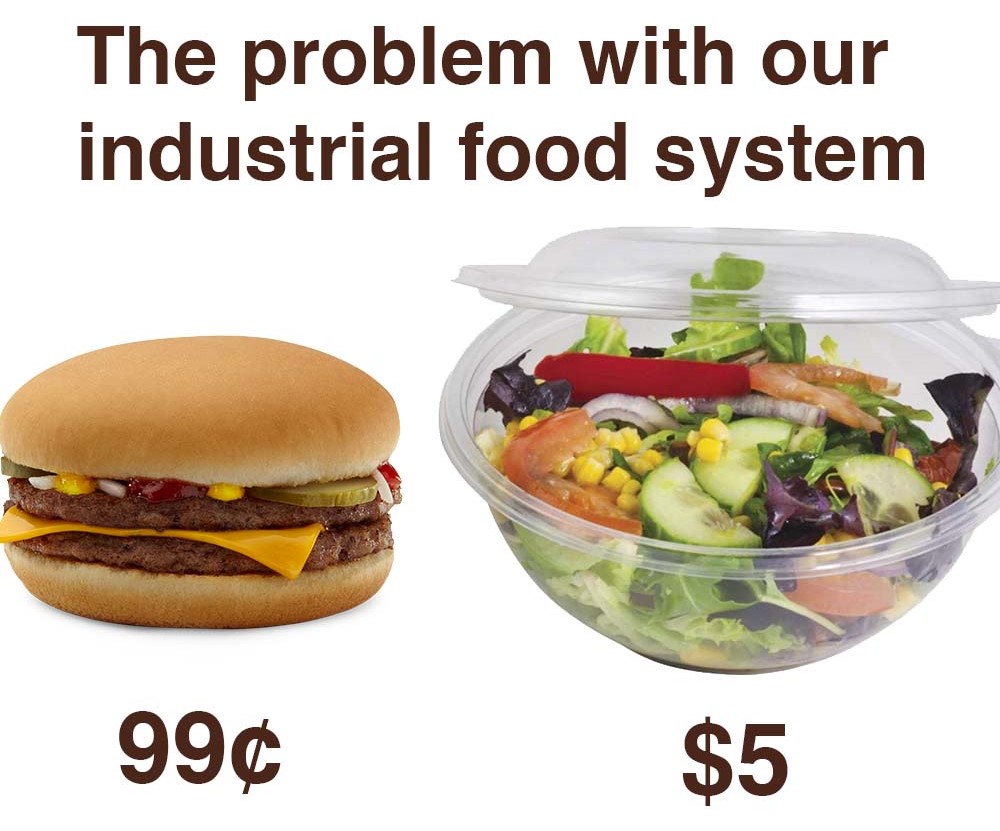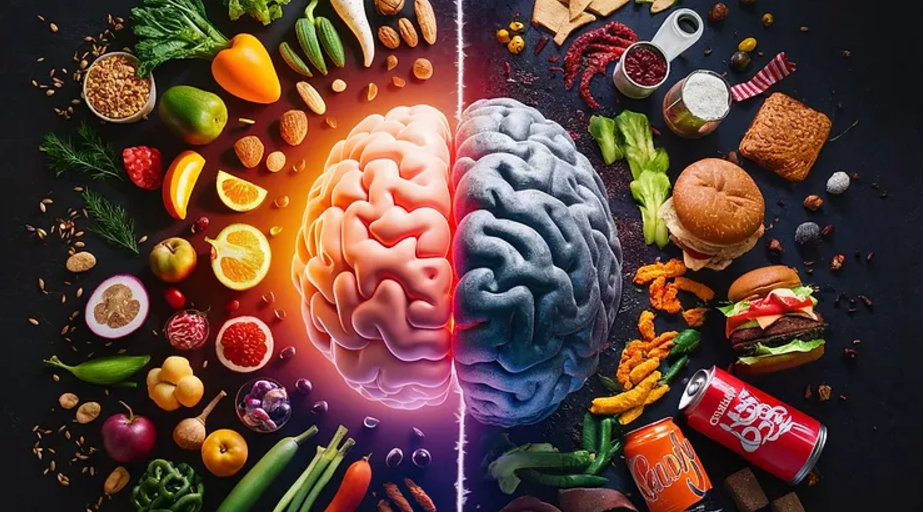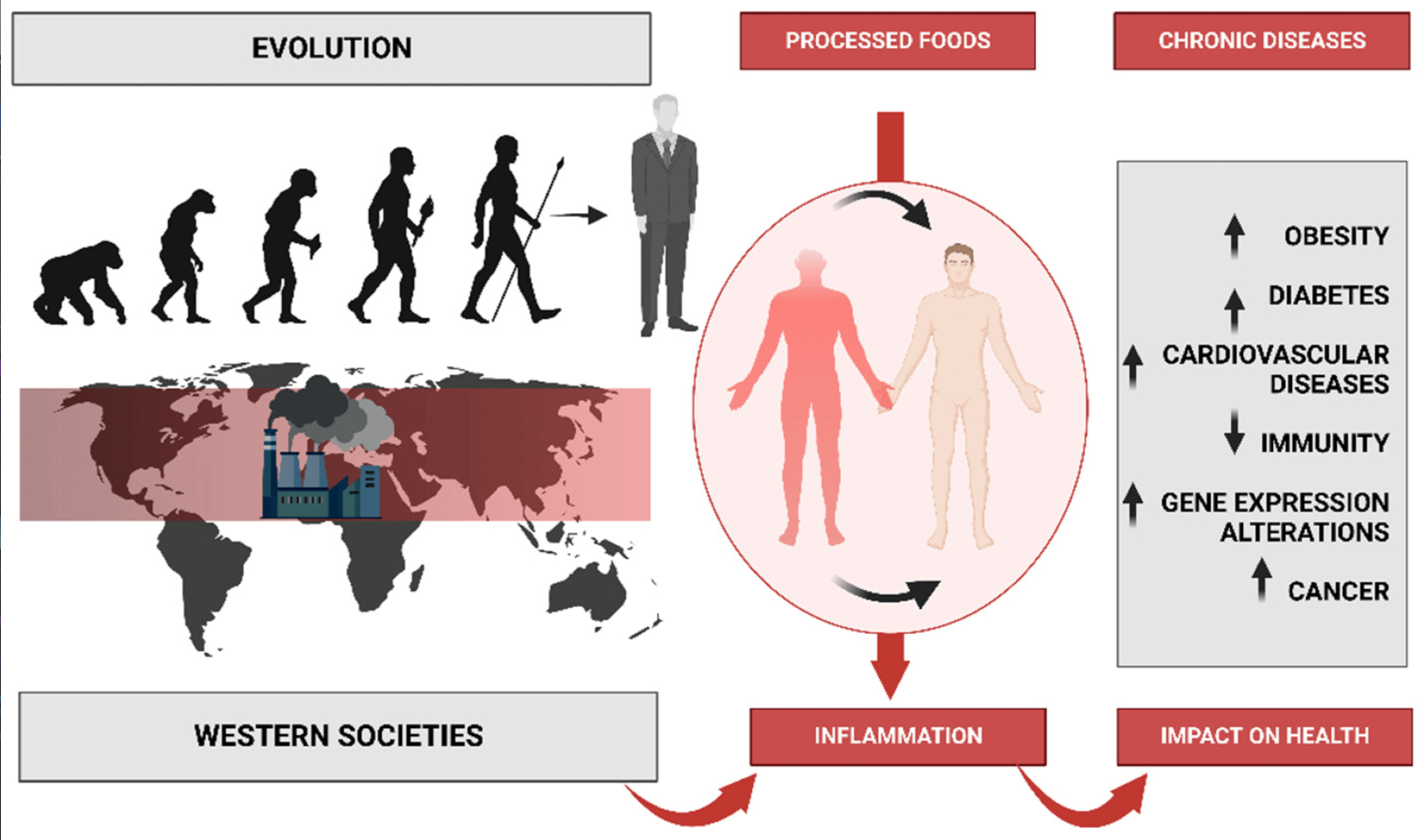The Hidden Dangers of Modern Food: How What We Eat Is Killing Us
Food is no longer just fuel for our bodies—it’s a reflection of our fast-paced lifestyles, a source of comfort, and a product of convenience. But as we indulge in heavily marketed, processed products, an unsettling reality lurks beneath the surface: our modern diets are leading to an unprecedented rise in chronic illnesses and premature deaths.
Startling evidence from the Global Burden of Disease Study reveals that poor diet now claims more lives globally than any other risk factor, even surpassing smoking. While the colorful packages and enticing flavors of modern food may tempt us, they mask the hidden dangers that are undermining our health.
In this blog post, we’ll uncover the alarming truths about what we eat—exploring how the Standard American Diet, sugar, seed oils, food additives, and industry manipulation have reshaped our food landscape and imperiled our well-being. Most importantly, we’ll outline actionable steps to reclaim our health and transform our eating habits. The question isn’t just what we’re eating—but how it’s slowly killing us, and what we can do about it.
You are, what you eat.
The Standard American Diet: Flipping the Pyramid Upside Down
The Standard American Diet—fittingly abbreviated as SAD—has seen a dramatic shift in recent decades. What was once a diet rooted in wholesome, nutrient-dense foods has morphed into a pattern dominated by processed and ultra-processed products, leaving traditional food values far behind.

Overconsumption of Processed Foods
- Prevalence: Processed and ultra-processed foods now account for nearly 60% of the total caloric intake in the United States. These foods are omnipresent, from breakfast cereals and snack bars to frozen meals and fast food.
- Nutrient Deficiency: Despite being high in calories, these foods are often low in essential nutrients like fiber, vitamins, and minerals. They are typically rich in added sugars, unhealthy fats, and sodium.
- Obesity Epidemic: The Centers for Disease Control and Prevention (CDC) reports that the adult obesity rate in the U.S. has reached 42.4% as of 2017–2018—the first time the national rate has surpassed 40%.
Neglecting Whole Foods
- Decline in Fruit and Vegetable Intake: Alarmingly, only 1 in 10 adults meet the federal recommendations for fruit or vegetable consumption, according to the CDC.
- Health Implications: Diets low in fruits, vegetables, and whole grains are linked to increased risks of heart disease, stroke, type 2 diabetes, and certain cancers.
Flipping the Pyramid
- Original Guidelines: The 1992 food pyramid emphasized grains at the base, followed by fruits and vegetables, then proteins and dairy, with fats and sweets at the top to be used sparingly.
- Current Consumption Patterns: This pyramid has effectively been inverted. Sugars, unhealthy fats, and processed foods now form the base of many people’s diets.
- Impact on Health: This dietary shift contributes to a rise in diet-related diseases, with poor diet being a factor in an estimated 678,000 deaths each year in the U.S. alone.

The Bitter Truth About Sugar: How the Industry Made Fat the Enemy
Sugar has quietly permeated nearly every aspect of our food supply, often disguised under countless aliases and promoted through strategic, deceptive marketing. While sugar consumption skyrocketed, the industry cleverly redirected blame for rising health problems, framing dietary fat as the primary culprit. This misdirection not only shaped decades of nutritional guidelines but also paved the way for the sugar-laden products that dominate our diets today.
The result? A public health crisis fueled by hidden sugars and the manipulation of consumer perception, leaving us vulnerable to obesity, diabetes, and heart disease—all while the real threat lurked sweetly in the background.

Sugar Consumption and Health Risks
- Rising Consumption: The average American consumes about 77 grams of added sugar per day, equivalent to 19 teaspoons—far exceeding health organizations’ recommendations of 25 grams (6 teaspoons) for women and 36 grams (9 teaspoons) for men.
- Obesity and Diabetes: Excessive sugar intake leads to weight gain and obesity, as sugary foods and drinks are calorie-dense but not filling. Obesity significantly increases the risk of type 2 diabetes. Currently, about 34 million Americans have diabetes, with another 88 million exhibiting prediabetic symptoms.
- Heart Disease: A study in JAMA Internal Medicine found that individuals consuming 17% to 21% of their calories from added sugar had a 38% higher risk of dying from cardiovascular disease compared to those consuming 8% of their calories from added sugar.
Industry Manipulation
- Historical Deception: In the 1960s, the Sugar Research Foundation funded Harvard researchers to produce studies minimizing the link between sugar and heart disease.
- Long-Term Impact: This misdirection influenced dietary guidelines for decades, leading to a proliferation of “low-fat” products that were often high in added sugars, inadvertently increasing sugar consumption and associated health problems.
- Continued Influence: The sugar industry continues to lobby against public health measures like soda taxes and mandatory added sugar labeling, funding research and marketing to maintain their market share while downplaying health risks.

The Hidden Presence of Sugar
- Multiple Aliases: Sugar can appear under more than 192 different names on ingredient lists, such as agave nectar, barley malt, dextrose, maltose, and high-fructose corn syrup, making it challenging for consumers to identify added sugars.
- Processed Foods: Added sugars are prevalent not only in sweets but also in savory items like breads, sauces, salad dressings, and processed meats, contributing to unintentional overconsumption.
 Side by side of ingredients added to store bought bread VS actual bread, what do you notice?
Side by side of ingredients added to store bought bread VS actual bread, what do you notice?
Taking Control of Sugar Intake
- Read Labels Carefully: Scrutinize ingredient lists and nutrition facts to spot hidden sugars. Be cautious of products marketed as “healthy” that may still be high in added sugars.
- Choose Whole Foods: Opt for unprocessed foods like fruits, vegetables, whole grains, and lean proteins, which naturally contain little to no added sugars.
- Limit Sugary Beverages: Replace sodas, energy drinks, and sweetened teas with water, herbal teas, or other unsweetened beverages to significantly reduce sugar intake.
- Cook at Home: Preparing meals at home gives control over ingredients and sugar content. Use natural herbs and spices to enhance flavor without added sugars.
 Heated Coca-Cola until water evaporates, left with black sludge of sugar paste
Heated Coca-Cola until water evaporates, left with black sludge of sugar paste
The Hidden Dangers of Seed Oils: Unveiling a Silent Threat in Our Diets
Seed oils—like soybean, corn, sunflower, and canola oils—have become staples in modern cooking and food production, often marketed as “heart-healthy” alternatives due to their polyunsaturated fat content. However, beneath their wholesome image lies a troubling reality. Excessive consumption of these oils, especially in the context of the highly processed Western diet, has been linked to a host of potential health risks.
From contributing to imbalanced omega-6 to omega-3 ratios to promoting inflammation and chronic disease, seed oils may be doing more harm than good. As their use skyrockets in everything from salad dressings to fried foods, it’s time to uncover the true impact of these seemingly innocuous ingredients.
Imbalance of Omega-6 and Omega-3 Fatty Acids
- Essential Fatty Acids: According to research published in Biomedicine & Pharmacotherapy, the optimal omega-6 to omega-3 ratio should be between 1:1 to 4:1.
- Modern Dietary Ratios: Research from the National Institutes of Health shows today’s Western diet ratio ranges from 10:1 to 20:1.
- Inflammation and Chronic Disease: Excessive omega-6 intake may promote inflammation, associated with increased risks of heart disease, type 2 diabetes, arthritis, and certain cancers.

Processing and Oxidation Concerns
- Industrial Processing: Seed oils are often extracted using high heat and chemical solvents like hexane, which can degrade the oils and create harmful byproducts.
- Oxidation and Harmful Compounds: Polyunsaturated fats in seed oils are prone to oxidation when exposed to heat, light, or air, producing compounds like aldehydes and lipid peroxides linked to cellular damage and inflammation.
- Trans Fats Formation: Small amounts of trans fats can form during the high-heat processing of seed oils, increasing the risk of heart disease by affecting cholesterol levels.
Consumption Trends and Hidden Sources
- Dramatic Increase in Intake: Consumption of seed oils, especially soybean oil, has skyrocketed—from virtually zero in the early 1900s to about 25 pounds per person per year in the U.S.
-
Hidden in Processed Foods: Seed oils are ubiquitous in processed and packaged foods, including fast food, baked goods, and salad dressings, making it difficult for consumers to monitor their intake.

The Hidden Risks of Food Additives and Preservatives
Processed foods often contain additives and preservatives to enhance flavor, appearance, and shelf life, which may pose health risks.
Artificial Colors and Flavors
- Health Concerns: A systematic review in the Journal of Clinical Medicine found links between artificial food colors and behavioral issues in children.
- Regulatory Actions: The European Food Safety Authority (EFSA) requires warning labels on foods containing certain artificial dyes.
Preservatives
- Sodium Nitrite and Nitrate: Used in processed meats, these can form nitrosamines—carcinogens linked to colorectal and stomach cancers.
- BHA and BHT: Synthetic antioxidants that prevent fats from spoiling but may act as endocrine disruptors and have been linked to cancer in high doses in animal studies.
Emulsifiers and Thickeners
- Impact on Gut Health: Emulsifiers like carrageenan and polysorbate 80 may disrupt gut microbiota balance, leading to inflammation and increased intestinal permeability, potentially contributing to digestive disorders.
Mitigating the Risks
- Choose Whole Foods: Focus on a diet rich in unprocessed foods that naturally contain beneficial nutrients without harmful additives.
- Read Ingredient Labels: Look for products using healthier oils like olive or avocado oil and avoid those with long lists of additives.
- Cook at Home: Control ingredients by preparing meals at home using unrefined oils and natural flavorings.
- Balance Fatty Acid Intake: Increase consumption of omega-3-rich foods to restore a healthier omega-6 to omega-3 ratio.
How the Food Industry Manipulates Us
The food industry holds immense power, subtly yet profoundly shaping what we eat, how we think about nutrition, and even the policies that govern public health. With profits as their primary focus, these corporations employ strategic marketing, influence scientific research, and lobby against regulations that could promote healthier choices. From targeting vulnerable groups, like children, with deceptive advertising to funding biased studies that downplay the risks of unhealthy ingredients, the industry’s tactics prioritize sales over our well-being. This pervasive manipulation not only clouds consumer judgment but also undermines efforts to address the growing health crisis linked to modern diets.
Marketing Strategies
Targeting Youth
- High Exposure to Ads: According to the American Psychological Association, children see 10 to 13 food advertisements per day.
- Early Brand Loyalty: Targeting youth fosters brand recognition and loyalty, influencing lifelong eating habits.

Emotional Appeals
- Associations with Happiness: Ads link unhealthy foods with positive emotions like joy and success, making consumers more likely to purchase these products.
- Social Acceptance: Marketing suggests that consuming certain foods enhances social status or belonging.
Health Washing
- Misleading Terms: Labels like “natural,” “organic,” “no-added sugar,” “low fat,” or “gluten-free” imply health benefits regardless of actual nutritional content, confusing consumers seeking healthier options.
Misleading Labels
- Hidden Sugars: Multiple Names: Sugar appears under more than 192 different names, obscuring its presence in products.
- Ingredient Placement: Using various sugars allows manufacturers to list them lower on ingredient lists, making sugar seem less prominent.
- Serving Sizes: Unrealistic Portions: Small serving sizes on labels understate calories, sugars, and fats, leading consumers to underestimate their intake.

Nutrient Claims
- Focus on Single Nutrients: Highlighting one positive aspect (e.g., “low fat”) diverts attention from negative attributes like high sugar content.
Policy Influence
- Lobbying Expenditures: OpenSecrets data shows the food and beverage industry spent over $30 million on lobbying in 2019.
- Regulatory Resistance: Lobbying aims to block or weaken regulations requiring clearer labeling or limiting marketing of unhealthy foods.
Shaping Guidelines
- Advisory Roles: Industry representatives participate in panels setting dietary guidelines, potentially swaying recommendations.
- Conflict of Interest: This involvement can emphasize certain nutrients or food groups benefiting the industry over public health.
Research Funding
- Biased Outcomes: Industry-funded studies often yield favorable results, potentially biasing scientific literature and confusing public perception.
Digital Marketing and Media Influence
-
Social Media Advertising:
- Targeted Ads: Algorithms promote unhealthy snacks to children and teens based on online behavior.
- Influencer Partnerships: Collaborations with social media influencers blur lines between genuine recommendations and paid promotions.

Psychological Impact
- Emotional Engagement: Digital ads evoke emotions like happiness or nostalgia, associating products with positive feelings.
- Gamification: Interactive games and apps encourage brand engagement, especially among youth.
Vulnerability of Youth
- Children’s Susceptibility: Young people are particularly vulnerable to digital marketing due to their developmental stage.
- Long-Term Influence: Early exposure to branding affects lifelong preferences and consumption patterns.
Implications for Public Health
- Normalized Unhealthy Eating: Constant exposure to marketing normalizes poor dietary choices.
- Hindered Decision-Making: Misleading labels and ads make informed dietary choices challenging.
- Policy Challenges: Industry influence can delay or weaken public health initiatives.
 Dominos Ingredients in North America VS UK
Dominos Ingredients in North America VS UK
The Inequality of Healthy Eating
Access to nutritious food is far from universal, with significant disparities affecting communities across socioeconomic and geographic lines. While some enjoy abundant choices of fresh, wholesome foods, others are trapped in “food deserts” or face financial barriers that make healthy eating unattainable.
These inequities exacerbate health disparities, as low-income and marginalized populations are often forced to rely on inexpensive, processed foods that contribute to chronic diseases. Addressing the inequality of healthy eating is not just about individual choices—it’s a systemic issue requiring policy changes, community initiatives, and a collective commitment to creating a more equitable food system.
Food Deserts
- Definition: Areas lacking access to affordable, healthy food options, particularly fresh produce.
- Health Impact: The USDA Economic Research Service reports that approximately 19 million Americans live in food deserts.
Economic Barriers
- Cost of Healthy Foods: Fresh produce and lean meats are often more expensive than processed alternatives.
-
Time Constraints: Low-income families may have less time for meal preparation due to work schedules, increasing reliance on ready-made meals.

Policy Solutions
- Community Programs: Initiatives like urban farming and mobile markets improve access to fresh foods.
- Subsidies and Incentives: Government support can make healthier food options more affordable.

Gut Health: The Foundation of Well-being
The gut microbiome, a bustling ecosystem of trillions of microorganisms in our digestive tract, plays a pivotal role in maintaining overall health. Far more than just aiding digestion, these microbes influence immunity, metabolism, and even mental well-being through the intricate gut-brain connection.
A balanced microbiome supports essential bodily functions, while disruptions—often caused by poor diet, stress, or overuse of antibiotics—can contribute to inflammation, chronic disease, and mental health issues. Understanding and nurturing gut health is not just a trend; it’s a cornerstone of achieving long-term wellness.

Diet’s Influence on the Microbiota
- Fiber Intake: Diets rich in fiber support beneficial bacteria, which ferment fiber to produce short-chain fatty acids with anti-inflammatory effects.
- Processed Foods: High intake of processed foods with added sugars and artificial additives can disrupt the microbiome balance, promoting harmful bacteria growth.
- Gut-Brain Connection: Research in Nature Reviews Neuroscience demonstrates the crucial link between gut health and mental well-being.
Connection to Diseases
- Obesity and Metabolic Disorders: An imbalanced microbiome can affect energy extraction and fat storage, contributing to weight gain and metabolic syndrome.
- Mental Health: The gut-brain axis connects gut health to mood and cognition, with dysbiosis linked to depression and anxiety.
Promoting Gut Health
- Probiotics: Include fermented foods like yogurt, kefir, and sauerkraut to introduce beneficial bacteria.
- Prebiotics: Consume foods rich in prebiotic fibers—garlic, onions, bananas—to nourish healthy gut bacteria.
- Limit Harmful Foods: Reduce intake of processed foods high in sugars and additives that disrupt gut balance.
The Link Between Diet and Chronic Diseases
Poor nutrition has become one of the most dangerous and preventable risk factors for chronic diseases, quietly driving a global health crisis. The foods we consume—or fail to consume—are fueling skyrocketing rates of heart disease, type 2 diabetes, cancer, and more.
Every bite of nutrient-poor, processed food contributes to this epidemic, while diets lacking in fruits, vegetables, and whole grains deprive our bodies of critical defenses. Chronic diseases don’t just appear overnight—they are the cumulative result of daily choices, shaped by an industrial food system that prioritizes profit over health. The link between what we eat and how we live has never been clearer—or more dire.

Cardiovascular Disease
- Prevalence: According to the World Health Organization, heart disease causes nearly 18 million deaths per year.
- Dietary Contributors: High intake of saturated and trans fats, sodium, and added sugars increase risks like hypertension and high cholesterol.
Type 2 Diabetes
- Global Impact: The International Diabetes Federation estimates 463 million adults had diabetes in 2019.
- Diet and Insulin Resistance: Diets high in refined carbs and sugars contribute to insulin resistance.
Cancer
- Diet-Related Cancers: The World Cancer Research Fund estimates that 30-35% of cancer deaths are linked to diet.
- Obesity Connection: Obesity increases the risk of at least 13 types of cancer.
Mental Health Disorders
- Depression and Anxiety: A meta-analysis in Molecular Psychiatry found that diets high in processed foods increase depression risk by 25-35%.
- Cognitive Decline: Poor diet is linked to increased risk of neurodegenerative diseases like Alzheimer’s.
Non-Alcoholic Fatty Liver Disease (NAFLD)
- Prevalence: Affects about 25% of the global population, often linked to obesity.
- Dietary Causes: High fructose intake from added sugars contributes to liver fat accumulation.
Obesity and Metabolic Disorders
- Current Statistics: According to the CDC’s latest data (2021-2022), the adult obesity rate in the U.S. has increased to 41.9%, with severe obesity affecting 9.8% of adults.
- Economic Impact: The Milken Institute estimates that obesity and overweight conditions cost the U.S. healthcare system $480.7 billion annually.
Processed Food Consumption
- Updated Findings: A 2022 study in the American Journal of Clinical Nutrition shows ultra-processed foods now account for 67% of calories in children’s and teens’ diets.
- Global Trends: The United Nations Food and Agriculture Organization reports that ultra-processed food sales are rapidly increasing worldwide, particularly in middle-income countries.
Microplastics in Food
- Recent Discoveries: Research in Environmental Science & Technology found that the average person consumes approximately 50,000 microplastic particles annually through food and beverages.
- Bottled Water Impact: A 2022 study in Water Research found that bottled water contains up to 100 times more plastic particles than previously estimated.
Food Additives Safety
- Emerging Concerns: The Environmental Working Group’s Food Scores database identifies over 3,000 food additives in the U.S. food supply.
- Regulatory Gaps: A 2023 report in JAMA Internal Medicine highlights that many food additives lack proper safety evaluation.
Mental Health and Diet
- Mediterranean Diet Benefits: A 2023 systematic review in Nutritional Neuroscience found that adherence to the Mediterranean diet is associated with a 33% lower risk of depression.
-
Ultra-processed Foods Impact: JAMA Neurology research (2023) links high consumption of ultra-processed foods to a 25% increased risk of cognitive decline.

Children’s Health
- Early Nutrition Impact: The WHO’s latest guidelines emphasize that poor nutrition in early life increases the risk of obesity and chronic diseases.
- School Lunch Programs: USDA research shows that improved school lunch standards lead to better academic performance and reduced obesity rates.
Sustainable Eating
- Environmental Impact: The UN’s IPCC report indicates that dietary changes could reduce greenhouse gas emissions by up to 8 gigatons annually.
- Food Waste: FAO statistics show that approximately one-third of all food produced globally is lost or wasted.
Economic Disparities
- Food Insecurity: The USDA’s latest report shows that 12.8% of U.S. households experienced food insecurity in 2022.
- Healthcare Costs: According to the Centers for Medicare & Medicaid Services, diet-related diseases account for a significant portion of the $4.3 trillion annual U.S. healthcare spending.

The Psychology of Eating: Beyond Nutrients
Understanding psychological factors can help address unhealthy eating patterns.
Emotional Eating
- Stress and Comfort Foods: People often consume high-calorie, sugary foods during stress.
- Cycle of Guilt: This can lead to overeating and negative emotions.
Mindful Eating
- Awareness: Paying attention to hunger cues and eating without distractions improves satisfaction.
- Savoring Food: Enjoying meals enhances the experience and aids digestion.
Cultural Influences
- Portion Sizes: Cultural norms may lead to overconsumption.
- Social Eating: Social events can encourage indulgence, affecting choices.

Lessons from Global Dietary Patterns
Exploring traditional diets from around the world reveals invaluable insights into healthier and more sustainable eating habits. These time-tested dietary patterns—rooted in whole, natural foods and balanced nutrition—stand in stark contrast to the processed, calorie-dense staples of the modern diet.
From the Mediterranean diet rich in fruits, vegetables, and olive oil to the plant-based simplicity of traditional Asian cuisines, these approaches not only promote longevity but also combat chronic diseases. By learning from these global practices, we can adopt healthier habits and reconnect with food as a source of nourishment and well-being.
Mediterranean Diet
Components: Emphasizes fruits, vegetables, whole grains, legumes, nuts, olive oil, and moderate fish and poultry.
- Health Benefits: Linked to lower risks of heart disease, stroke, and certain cancers.
Traditional Asian Diets
- Components: High in vegetables, rice, soy products, and fish, with minimal processed foods.
- Longevity: Associated with lower rates of chronic diseases and longer life expectancies.
Contrast with Western Diet
- High Processed Foods: The Western diet’s reliance on processed foods correlates with higher obesity and chronic disease rates.
Takeaway
-
Adopt Healthy Elements: Incorporating aspects of these traditional diets can improve health outcomes.
Conclusion
The hidden dangers of modern food are deeply intertwined with our health, environment, and society. From the overconsumption of processed foods and added sugars to the pervasive influence of the food industry, our dietary patterns have strayed far from what nourishes and sustains us. These choices are not only undermining individual well-being but also driving a global epidemic of chronic diseases, preventable deaths, and health disparities.
However, it’s not too late to change. By understanding the impact of what we eat, we can reclaim control over our health and work toward a brighter, healthier future—for ourselves and for generations to come.
Action Steps
- Educate Yourself: Dive deeper into the relationship between food and health. Understand the implications of sugar, seed oils, and processed foods in your diet.
- Choose Whole Foods: Focus on unprocessed, nutrient-dense options such as fresh fruits, vegetables, whole grains, lean proteins, and healthy fats.
- Read Labels Carefully: Look beyond the marketing and scrutinize ingredient lists to avoid hidden sugars, harmful additives, and unhealthy fats.
- Cook at Home: Preparing meals at home gives you control over ingredients, portion sizes, and cooking methods.
- Limit Processed Foods: Cut back on convenience items like snacks, sugary drinks, and fast food, which often contain empty calories and harmful ingredients.
- Prioritize Gut Health: Incorporate probiotics and fiber-rich foods to nourish your microbiome and support overall well-being.
- Advocate for Policy Change: Support initiatives promoting transparency in food labeling, healthier school lunches, and access to nutritious foods in underserved communities.
- Adopt Global Insights: Integrate aspects of traditional diets, such as the Mediterranean or Asian dietary patterns, to embrace balanced, health-focused eating habits.
By taking small, consistent steps, you can protect your health, challenge harmful food norms, and inspire others to do the same. Together, we can push back against the hidden dangers of modern food and build a culture of wellness and informed choice.

